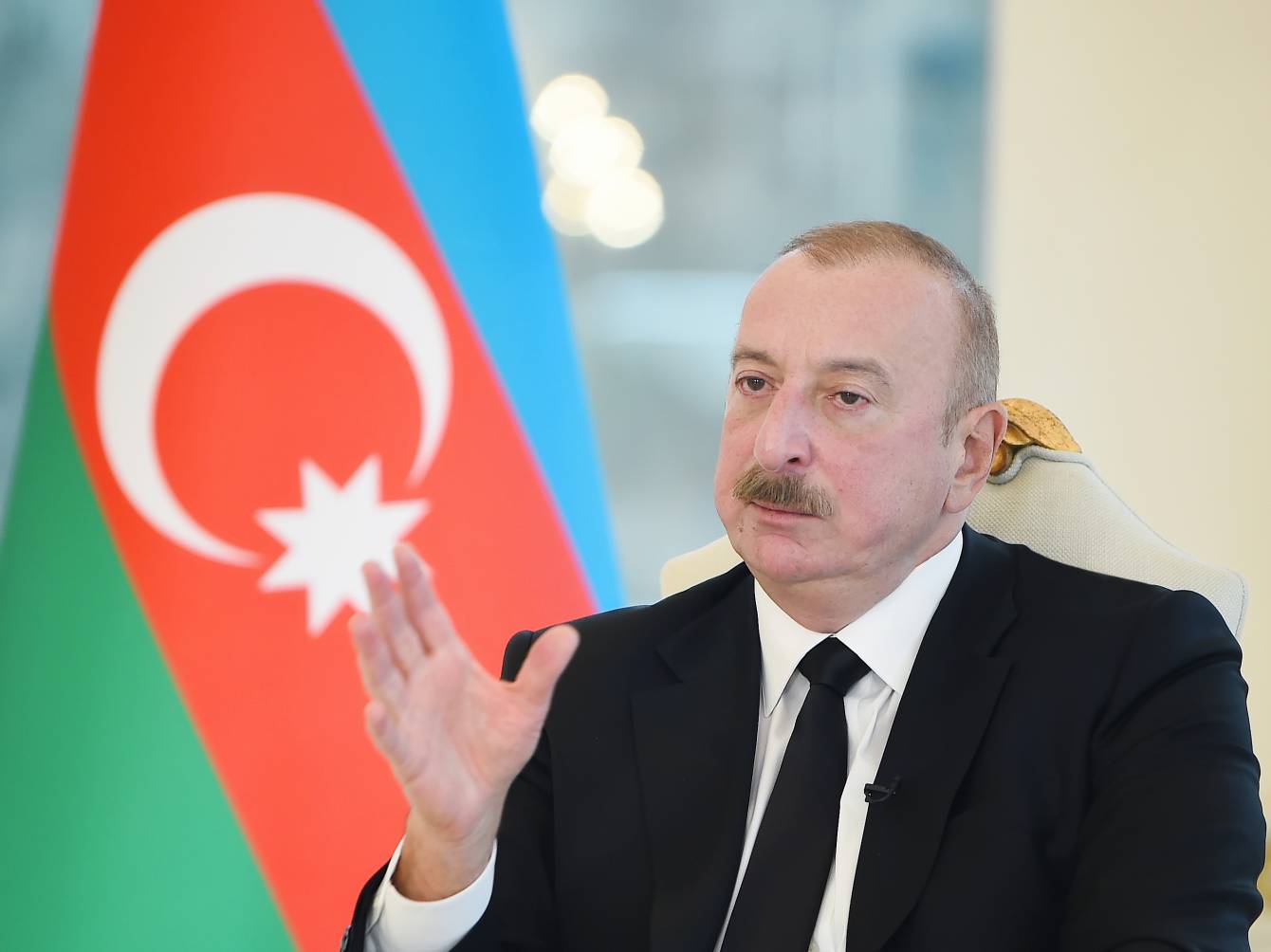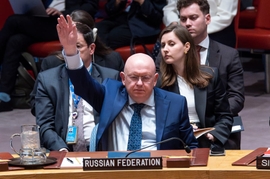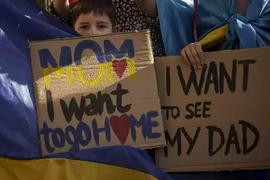President Ilham Aliyev discussed several key topics during a talk with local TV channels this week, including the Azerbaijan-Armenia peace agenda, border delimitation, and reconstruction efforts in the liberated lands.
Here are the key takeaways from President Aliyev's comprehensive speech:
Peace
- When the Second Karabakh War [between Armenia and Azerbaijan] ended, there was a certain vacuum and no one knew what would happen next. It was the Azerbaijani side that suggested at that time that there should be a peace treaty to fill this gap.
- Armenia and some other countries wanted to add the subject of Karabakh to these principles [of normalization of relations between Azerbaijan and Armenia] at that time. However, Azerbaijan was against it from day one. Karabakh is Azerbaijan’s internal matter, and if a peace agreement is signed, it will be an agreement between Azerbaijan and Armenia.
- The negotiations [between Azerbaijan and Armenia] did not give rise to any particular hopes for a while. Because Armenia and certain countries standing behind it insisted on including the issue of Karabakh there, especially the issue of its status. After some time, Azerbaijan's steps and position led to some changes in their position.
- There was no longer the issue of a status, but one of the rights and security for the Armenians living in the Karabakh region that both Armenia and its patrons were trying to include in it. In response, Azerbaijani side said that if this is the case, then the rights and security of the Azerbaijanis who were expelled from Armenia should also be included there with the same terms. Everything should be mutual. Our position remained unchanged: either this issue is not reflected in the peace treaty or the rights and security of both peoples will be reflected.
- The fundamental conditions for the signing of a peace treaty [between Armenia and Azerbaijan] have now been created, and therefore, work on the wording should progress fast.
- Armenia is seeking the guarantors for this peace treaty. Azerbaijan believes that there is no need for that. This is a peace treaty to be signed between two sovereign states. The Azerbaijani side doesn’t need any guarantors here, and if it is going to be signed in a bilateral format, it should be signed. If someone wants to help, the Azerbaijani side doesn’t mind that either. However, this help cannot be mandatory.
- Some are now competing for hosting negotiations in this country, that country or elsewhere. It is a bit like a geopolitical rivalry. Baku would not want Armenia-Azerbaijan relations to become a geopolitical issue. This is an issue between two countries which have to solve it.
Border delimitation & demarcation
- Why maps of 1975, or 1970, or even the 1970s and 1990s, as expressed in some [border delimitation] proposals. The answer is very simple. In the 20th century the lands of Azerbaijan were given to Armenia in parts. One day after the establishment of the Azerbaijan People’s Republic in 1918, the ancient Azerbaijani city of Irevan [present-day capital city of Armenia] was handed over to Armenia. After the Sovietization in April 1920, in November, the Soviet government took the bigger part of West Zangezur from Azerbaijan and handed it over to Armenia. By May 1969, Azerbaijani lands were given to Armenia in parts, and from an area of about 100,000 square kilometers (the territory of the Azerbaijan People’s Republic), it dropped to 86,600 square kilometers. After Heydar Aliyev became the leader of Azerbaijan in July 1969, this process was stopped. This is why Armenia wanted to use the maps of the 1970s as a basis.
- If the parties refer to the political foundations, then it should be taken either the period of the establishment of the Azerbaijan People’s Republic or the period of Sovietization as a point of reference. It is a political methodology. If the parties prefer the chronological methodology, then let's see what maps were like at the beginning of the 20th century and build work on these maps.
- The parties should refer to a political methodology as a basis, a chronology method should be taken as a basis, or they should not base their work on any map at all. A commission was established. Expert groups should be set up to speed up the work of the commission. Let them go around those places and define that border. Because today the border [between Azerbaijan and Armenia] is conditional in nature.
- As for the occupied Azerbaijani villages, there are enclave and non-enclave villages. The villages that are not enclave, the four villages should be returned to Azerbaijan without any preconditions. The villages that are enclave, a separate expert group should be established and this issue should be discussed. Azerbaijan believes that all enclaves should be returned. The roads leading to these enclaves should have the necessary conditions and the people living there should be accommodated in these enclaves.
- Azerbaijan is not going back anywhere. Neither from the positions of May 2021 nor from the positions of September 2022. Azerbaijan is not taking a step back because that border must be defined.
- Armenia continues to occupy Azerbaijan’s villages, and this is unacceptable. This issue will be clarified during the meeting of the commissions at the end of this month [January of 2023].
- The peace treaty may contain a clause related to delimitation and demarcation. However, if [the parties] wait for the delimitation and delay the peace agreement, then the peace agreement may not be signed even after 30 years.
Reconstruction in liberated lands
- Along with all the large infrastructure projects in liberated lands, Azerbaijan’s main achievement is that the displaced people have returned to five settlements. The cities of Lachin and Fuzuli, and the villages of Aghali, Talish and Zabukh are already reviving.
- All infrastructure projects in the Karabakh and East Zangezur regions will continue this year. These are massive projects.
- All these infrastructure projects bring the opportunity to return a larger number of former internally displaced persons (IDPs) to their ancestral lands this year, and there are five cities they will return to this year – Shusha, Jabrayil, Kalbajar, Khankendi and Khojaly. Former IDPs are expected to return to the cities of Aghdam, Zangilan and Gubadli in 2025.
- Azerbaijan’s goal is to return 140,000 former IDPs to their ancestral lands by the end of 2026.
- No donor organization or any party is helping Azerbaijan. Only Uzbekistan and Kazakhstan have given brotherly support in connection with the construction of two schools in Fuzuli, and all other projects are being realized at Azerbaijan’s own expense.
- President Aliyev also appeals to the private sector and calls on them to invest more actively in the Karabakh and East Zangezur regions.







 Azerbaijan and Armenia started the process of demarcation of their border on Tuesday, with the installation of the first border markers based on ge...
Azerbaijan and Armenia started the process of demarcation of their border on Tuesday, with the installation of the first border markers based on ge...
 President Aliyev emphasized the critical role of the North-South Transport Corridor in fostering transport cooperation between Azerbaijan and Russi...
President Aliyev emphasized the critical role of the North-South Transport Corridor in fostering transport cooperation between Azerbaijan and Russi...
 Iran and Pakistan have signed eight cooperation documents in various fields, and agreed to strengthen ties to fight terrorism in the region.
Iran and Pakistan have signed eight cooperation documents in various fields, and agreed to strengthen ties to fight terrorism in the region.
 As the conflict between Ukraine and Russia escalates, the strategic importance of Kharkiv, Ukraine's second-largest city, has come sharply into focus.
As the conflict between Ukraine and Russia escalates, the strategic importance of Kharkiv, Ukraine's second-largest city, has come sharply into focus.
 Iranian President Ebrahim Raisi expressed Tehran’s readiness to participate in significant development projects in Sri Lanka during the inauguratio...
Iranian President Ebrahim Raisi expressed Tehran’s readiness to participate in significant development projects in Sri Lanka during the inauguratio...



